So what do pubs and 18th century plasterwork have to do with each other? Like the Irish themselves, both their pubs and their plasterwork have an air of whimsy and wit not found anywhere else. Plus it makes a cute homonym. Remember those from elementary school? Same word, different meaning, like train, plant and spring.
While I am not advocating that you get plastered at all of these pubs in Dublin (although it could make for an eventful trip and might happen ‘accidentally’ ), each is well worth a stop. So are the other destinations housing some of Dublin’s most beautiful architectural details. Like its pubs, plasterwork is built into Dublin’s DNA. In plaster’s case, literally. As my hostess Linda O’Shea Farren, who more often focuses on music than decoration, proudly proclaimed, “at least we conserved the cornicing” in her government-protected historic home.
You’ll want to bookmark this post because nothing beats the recommendations of a native. The list of pubs I am sharing today are the top favorites of my Dublin hosts last January. In exchange, I encouraged them to delve into Irish plasterwork. Should you happen to be traveling with someone not so attuned to interior details, I find that a pint makes everything more palatable.
The Pubs
As famous Dubliner James Joyce wrote in Ulysses, it would be a “good puzzle to cross Dublin without passing a pub,” so let’s start there.
The Merchant’s Arch
Locals consider most bars in the oft-touted Temple Bar district to be tourist traps but my friend Linda insists that The Merchant’s Arch, built in 1821, avoids that pitfall. Located right at the foot of the Ha’penny Bridge, you can’t miss this gateway to Temple Bar. Its most striking feature is a fabulous, lengthy and especially windy spiral staircase cited as the inspiration for a similar one lined with portraits at Hogwarts where the paintings’ subjects jump the frames. The traditional Irish music is not bad either, and while we didn’t eat there, Linda assured me the food is good pub fare
The Ha’penny Bridge over the River Liffey.
Doheny & Nesbitt
Located on Baggot Street, come here to feel transported back to the late 1800s. This venue bears all of its original Victorian architecture including the bar counter, carved timber floors, paper maché ceiling and sweet petite “snugs.” Originally designed to give the prim Victorian ladies a secluded spot to imbibe, these private nooks are perfect for conversationalists making Doheny & Nesbitt’s a favorite for politicians, journalists and anyone seeking a quiet tête a tête. Outside the snugs, the pub is jolly and convivial. When Linda asked one of the “lads” to snap our picture, he photo bombed us!
Above, in one of the snugs with my hosts, Linda and Brian O’shea Farren. Below, Linda and I with our photo bomber.
O'Donoghue's
A beloved local venue for Christy Moore and the Dubliners, O’Donoghue’s on Merrion Row is lined with photographs of all the Irish music greats. It’s your place for traditional Irish music, held nightly seven days a week. Just around the corner from Doheny & Nesbitt’s, you can do both easily on one pub crawl.
4. The Church
No doubt if you are planning to “do” Dublin, you have scheduled your Guinness Storehouse tour at St. James Gate Brewery. Less well known is the church on Dublin’s north side where Arthur Guinness, the founder, got married. Built in 1700, Saint Mary’s has been converted to a pub but retains many of its ecclesiastical roots including the original pipe organ and crypt.
5. Stag’s Head
A neighborhood place where the lads stop for a pint, Stag’s Head will give you a sense of hidden Ireland. Tucked down a narrow passageway on Dame Street, you will know you arrived when you spy the massive stag’s head above the bar and feel the local vibe.
6. Mulligans
Here is a bonus pub for James Joyce fans. We didn’t pop in but my hosts made certain we passed by Mulligan’s on Poolbeg Street. It is reputed to be James Joyce’s version of the old TV show, Cheers and Joyce fans may want to vie for a perch on the author’s favorite stool.
The Plaster
Now that you’ve had your drink, it’s time for the icing on the cake. Exquisitely decorated ceilings and walls abound, both in Dublin’s private homes and public spaces, reflecting the Georgian architecture that lends considerable charm to the city. The 3 venues featured here are all open to public and by visiting them you will see each of the Georgian plasterwork styles popular in the 18th century: baroque, rococo and neoclassical decoration.
Powerscourt Townhouse Center
If only shopping malls stateside could be this picturesque. Just off Grafton Street, the Powerscourt Townhouse Center, home to high end shops for antiques, home goods, fashion and art, was once the city house of Richard Wingfield 3rd Viscount Powerscourt and his wife Lady Amelia. They built it to entertain society while in town during Parliament season. Constructed between 1771-1774, the house features both rococo and neoclassical plasterwork designed by master craftsman Michael Stapleton, and it remains one of the most important examples of domestic architecture in Dublin. Stapleton was a colorful fellow dubbed the “French Earl “ after he returned to Dublin from his Grand Tour sporting all of the latest French fashions. At the end of the 18th century he was regarded as the finest “stuccodore” in the city. Powerscourt was converted to a shopping mall in 1978-1981 but retains most of its original details to delight shoppers.
2. Numbers 85 and 86, St. Stephen’s Green (aka Newman House)
Two other fine Georgian mansions are combined as Newman House, the historic home of the Catholic University of Ireland, a precursor to University College Dublin. Located at Numbers 85-86 on St. Stephen’s Green, the complex is now part of Dublin’s Museum of Literature (MoLi). When I visited in January 2024, guided tours were only offered on Sundays, so plan ahead. These homes showcase the craftsmanship of the other notable stuccodores in Ireland, the Lafranchini brothers and Robert West.
Number 85 came first. It features a particularly early room by the LaFranchini brothers decorated in the baroque style. Built in 1738 by architect Richard Cassels, the Lafranchini’s went on to embellish other rooms at Number 85 in the more fanciful rococo manner.
Above, the Lafrancini brothers’ baroque plasterwork at Newman House.
Above and below, rococo plasterwork at Newman House
Number 86 was constructed in 1765 at the height of the rococo craze. It was designed by Robert West for one of Dublin’s most notorious playboys, Buck Whaley. Both West and Whaley’s lives apparently lent themselves to the Irish’s gift for glib storytelling. I first saw West’s plasterwork at Castle Ward outside Belfast. Like Number 86, the decoration there features a violin. At both venues, I was told that the demand for West’s craftsmanship was so high that he cut an extraordinary corner to speed construction up so he could move on to the next job. The story goes that the violins one sees on the walls are actual instruments. West simply dipped them in stucco and affixed them, instead of actually carving a faux. I am taking bets on whether that tall tale is true.
Above and below, Robert West’s stairhall at Newman House allegedly sporting real violins.
3. The Hugh Lane Gallery (aka Charlemont House)
There are many reasons besides plaster to visit Dublin’s municipal art gallery, the Hugh Lane Gallery. A vibrant place located on Parnell Square, its offerings include free Sunday concerts, wonderful art exhibitions, Francis Bacon’s crazy messy reconstructed studio and a delicious cafe. But the gallery, once known as the Charlemont House, built 1763, has fine neoclassical detailing, particularly its magnificent Oval Hall. While I was there, the Hall was painted black to harmonize with a nearby special Warhol exhibition which, in my opinion, beautifully set off the marvelous detailing. Take in “what’s on” to see more of the gallery’s architectural delights throughout the building.
Do drop me a line to share your favorite pubs or other not-to-be missed architectural sites in Dublin. Linda and Brian said I could come back.
Bon voyage,
Lynn
The cornicing in the entry foyer at Fitzroy House, Linda and Brian’s home.
All photos by Lynn Byrne





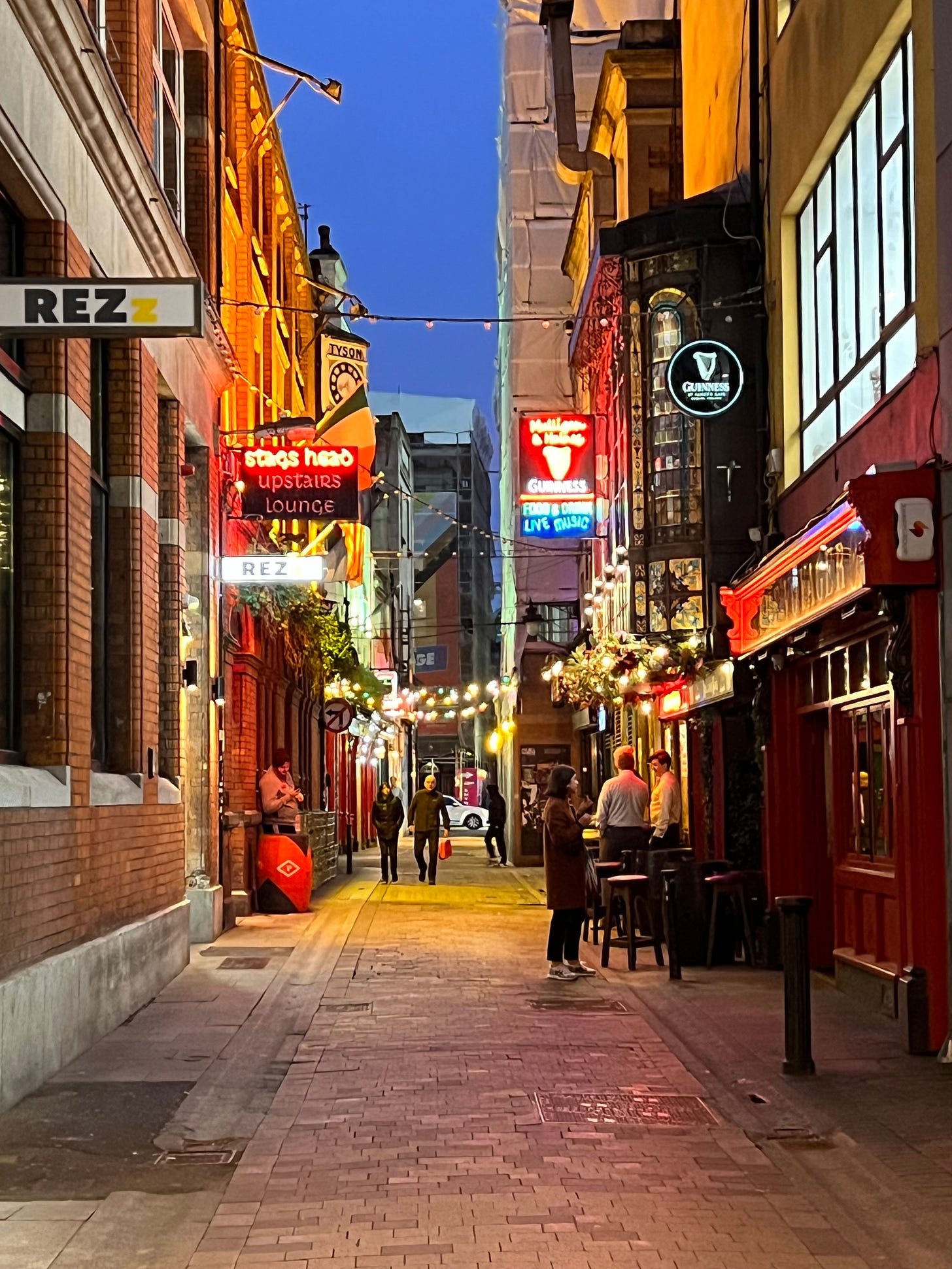
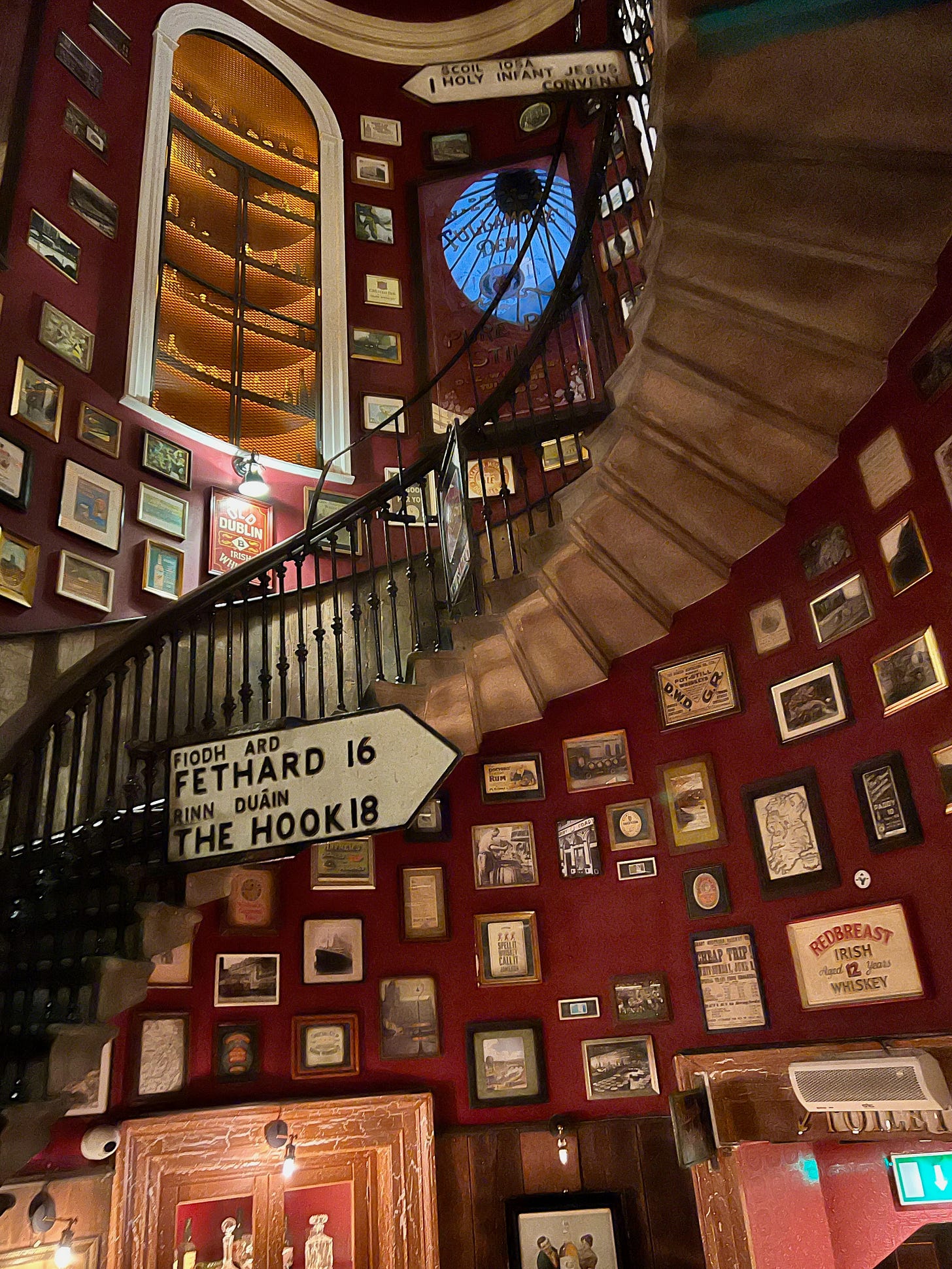

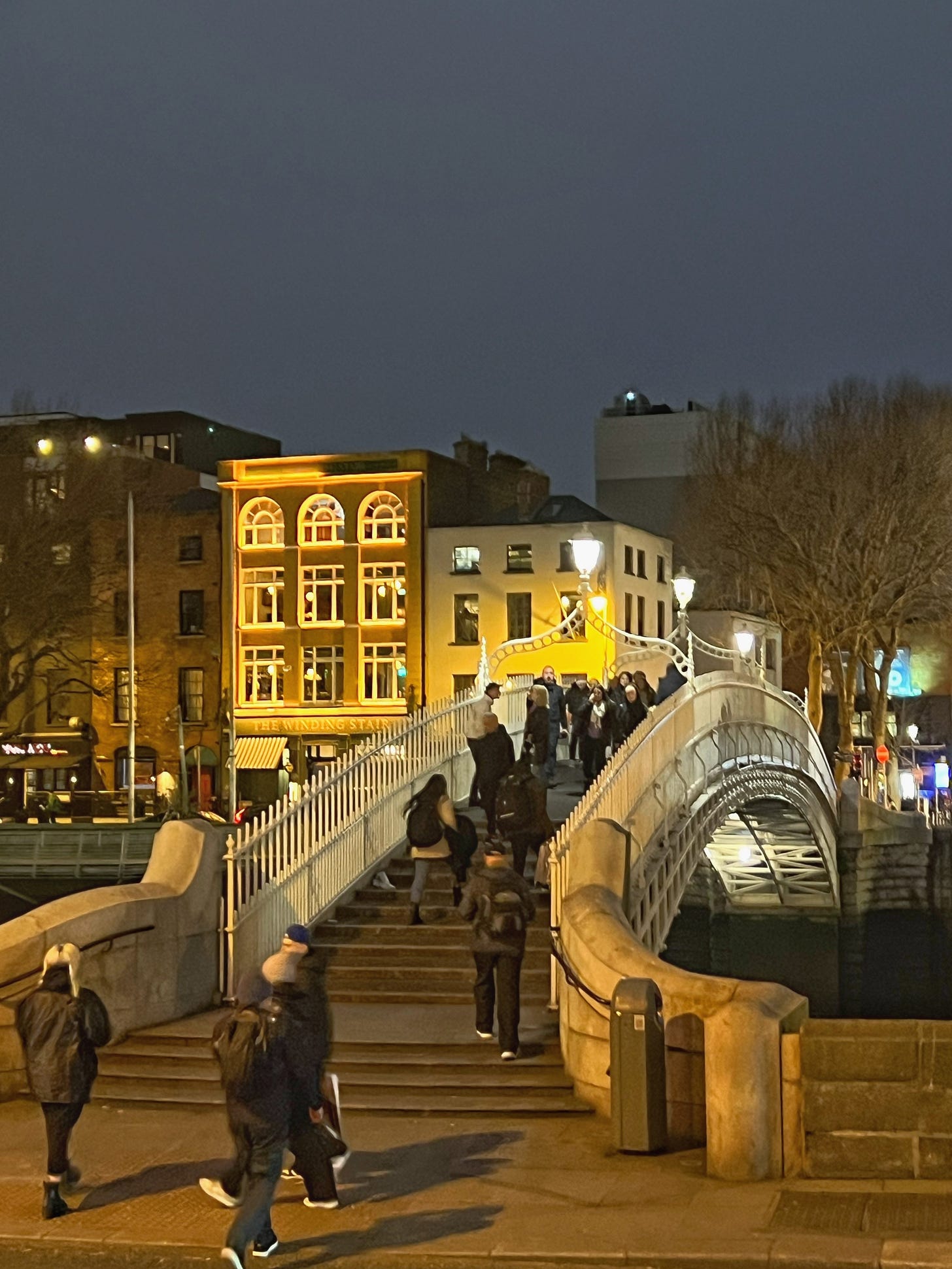



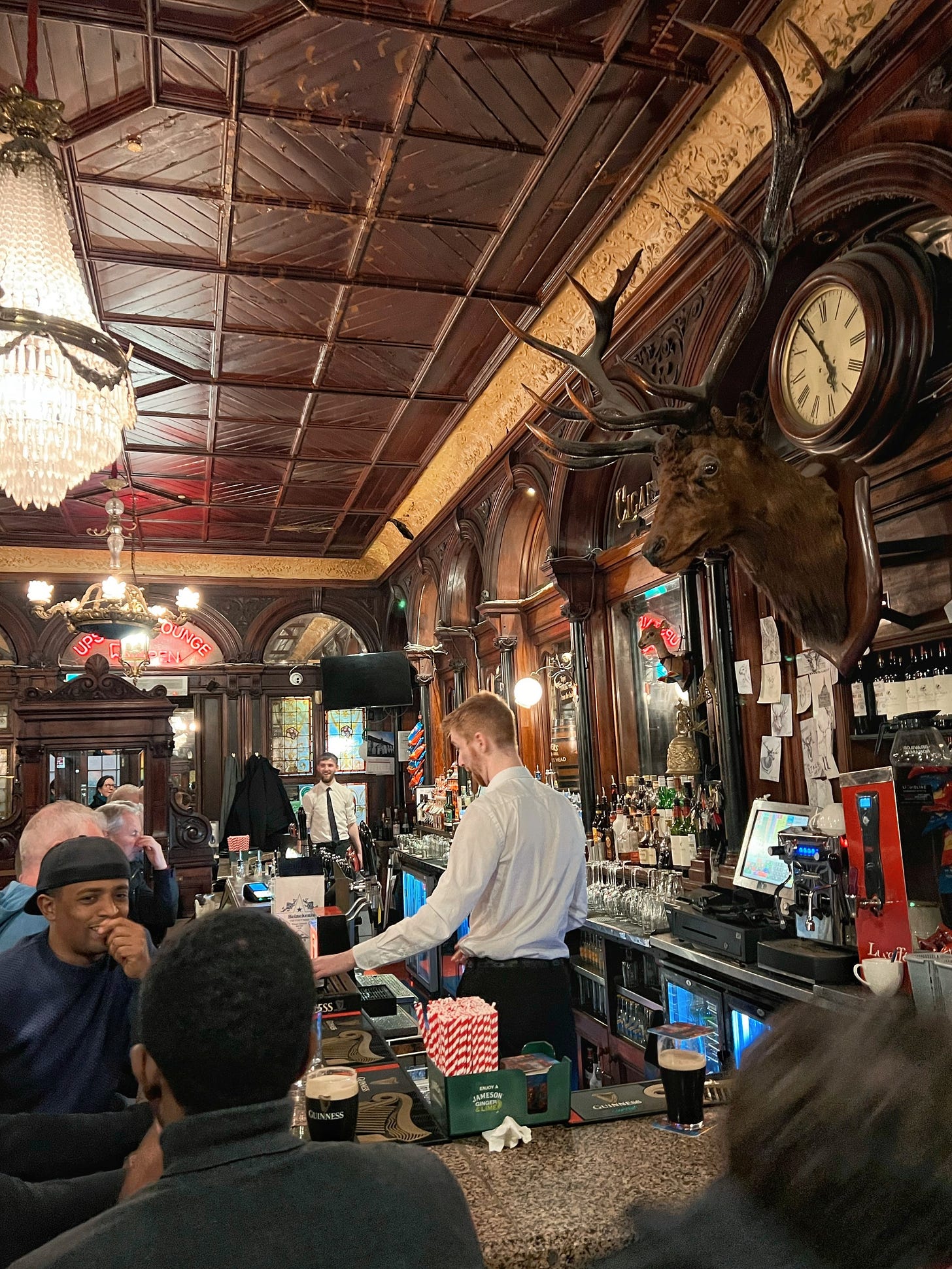



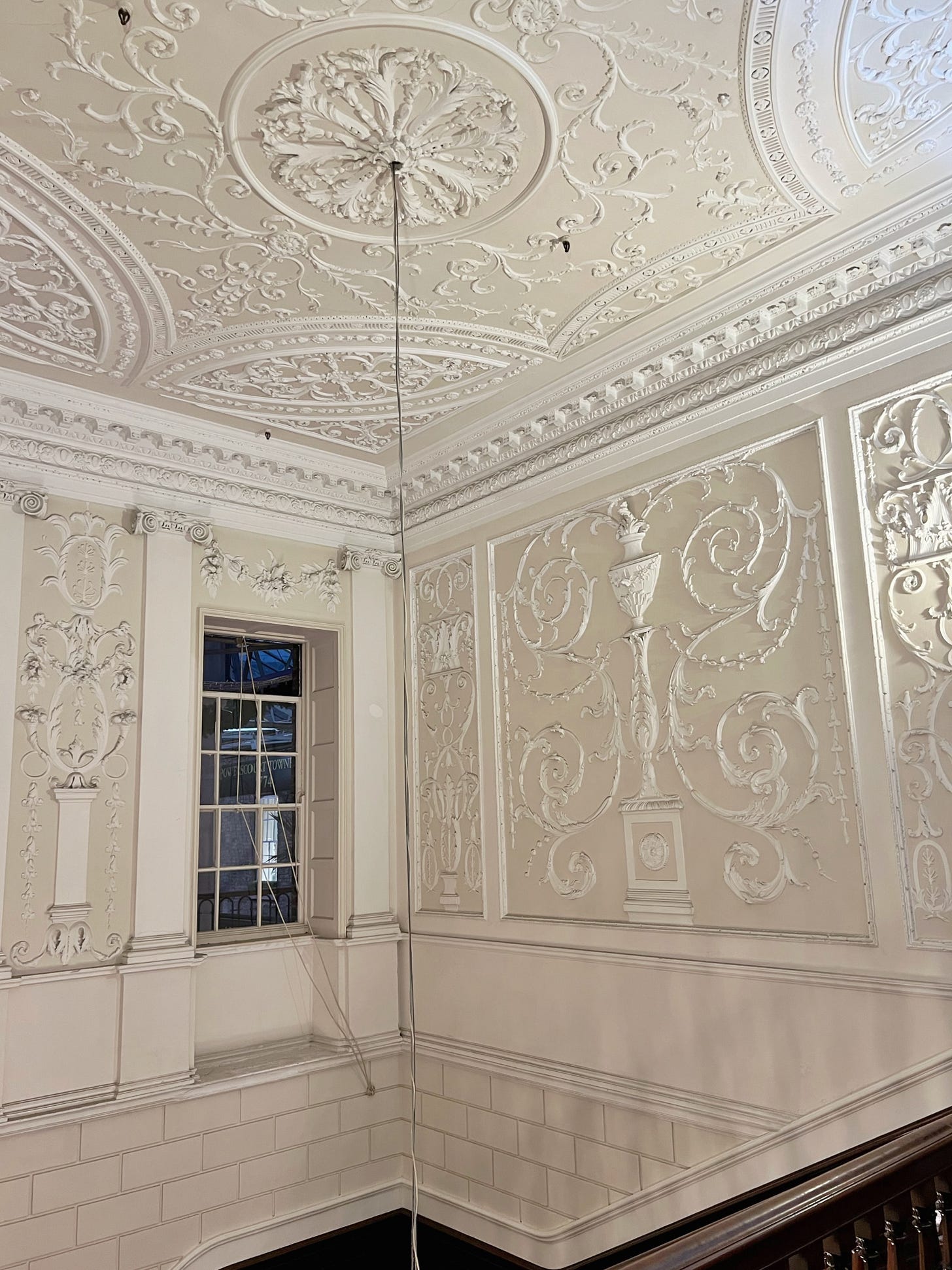
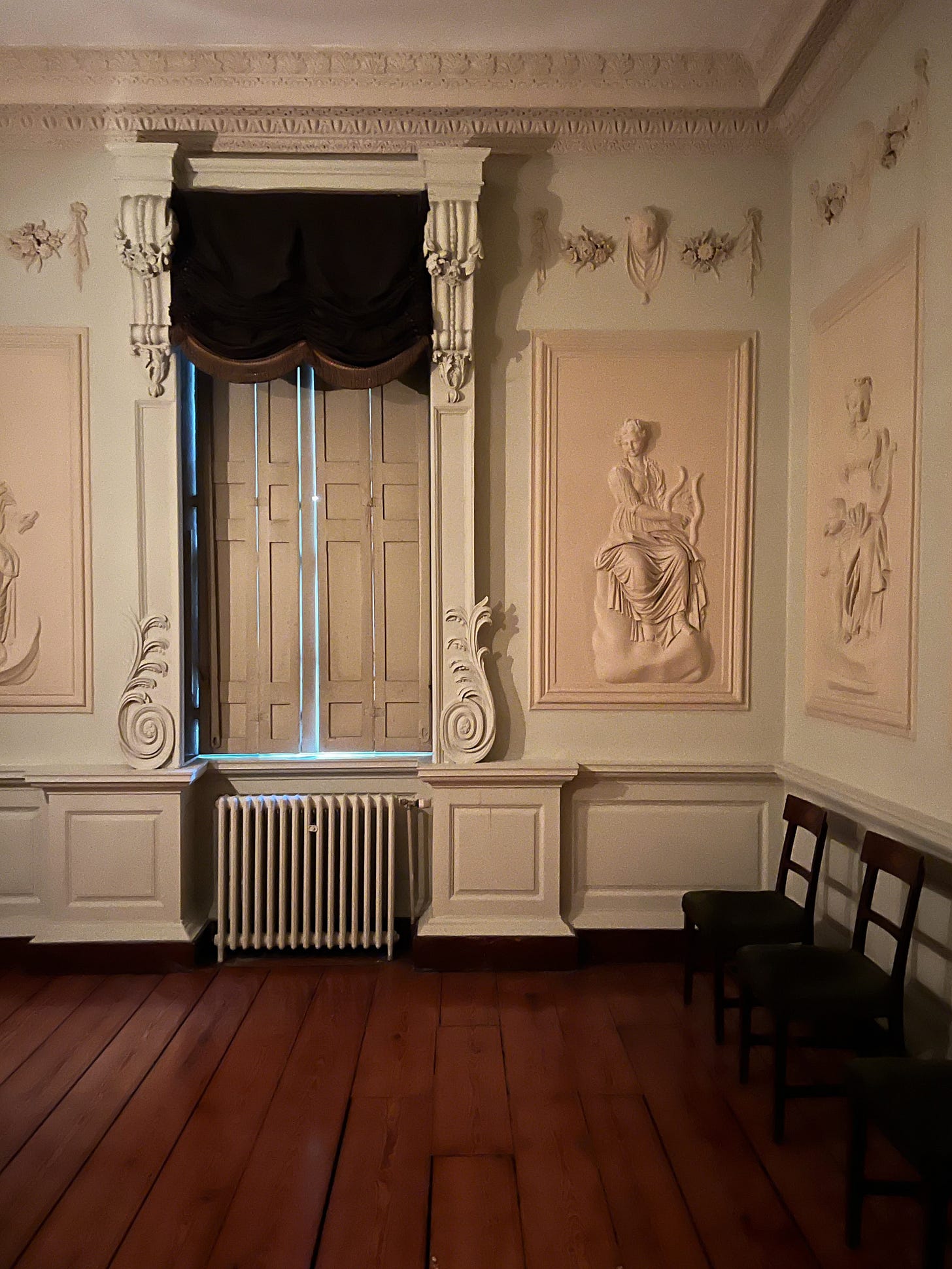
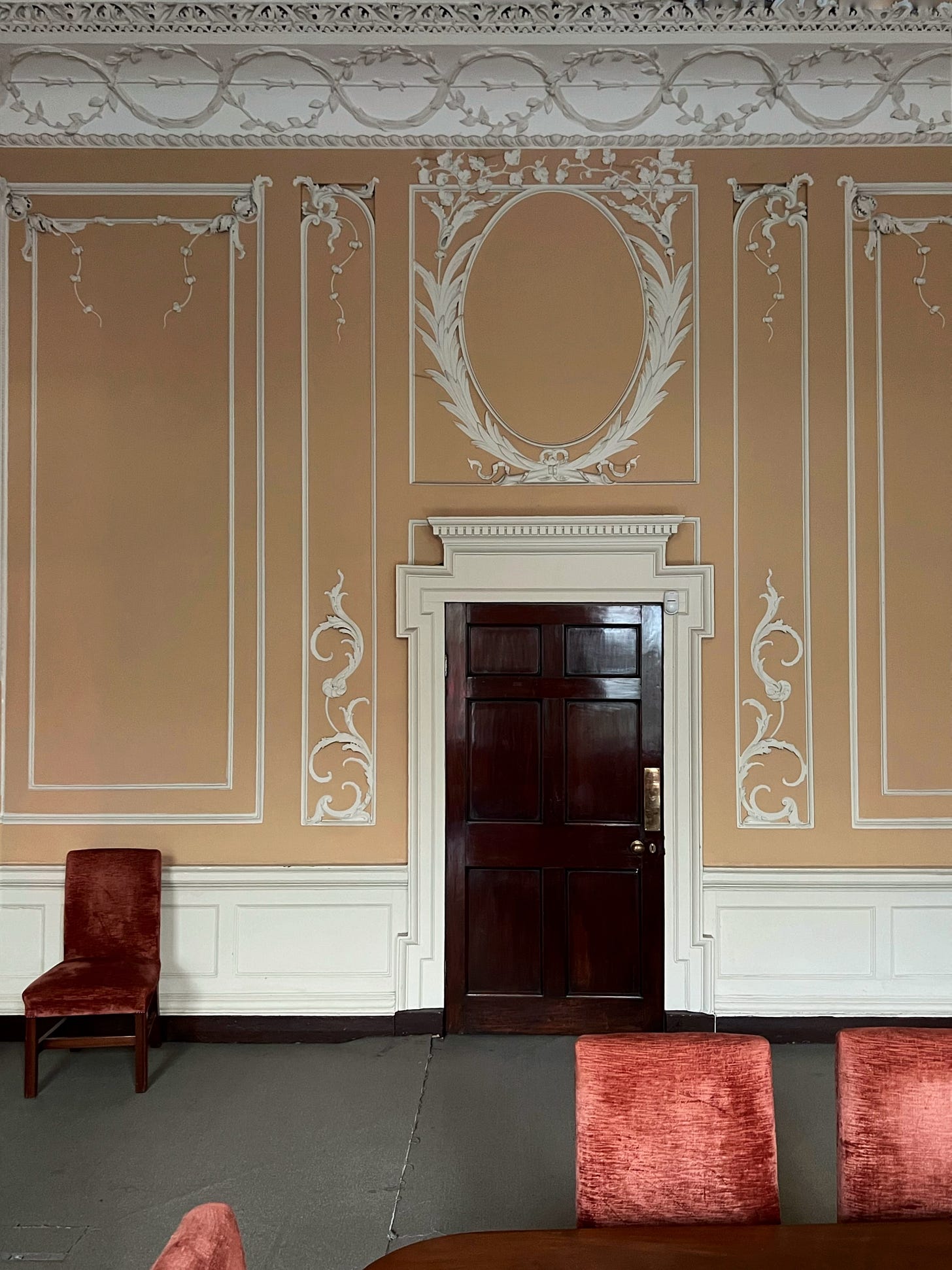

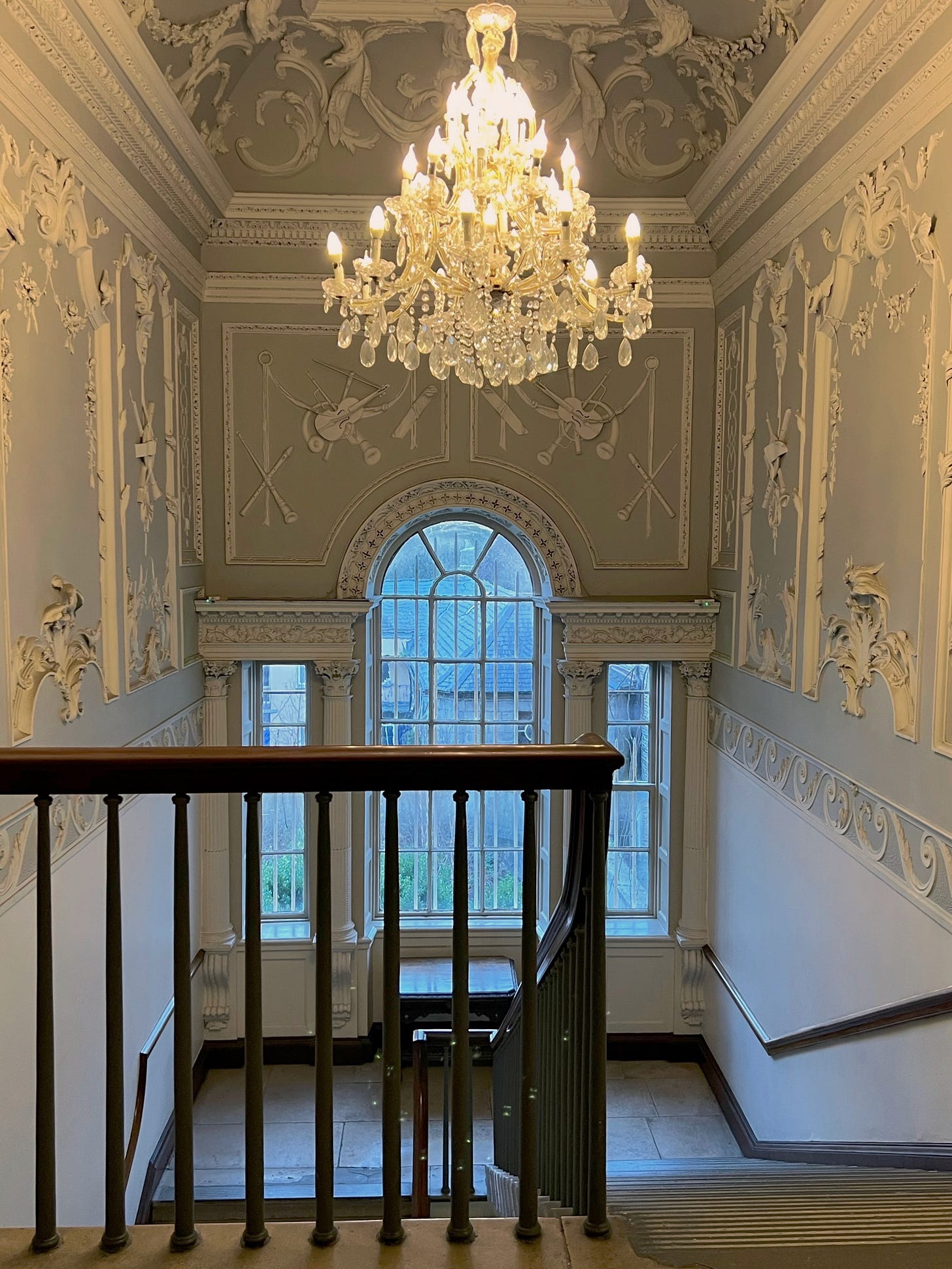
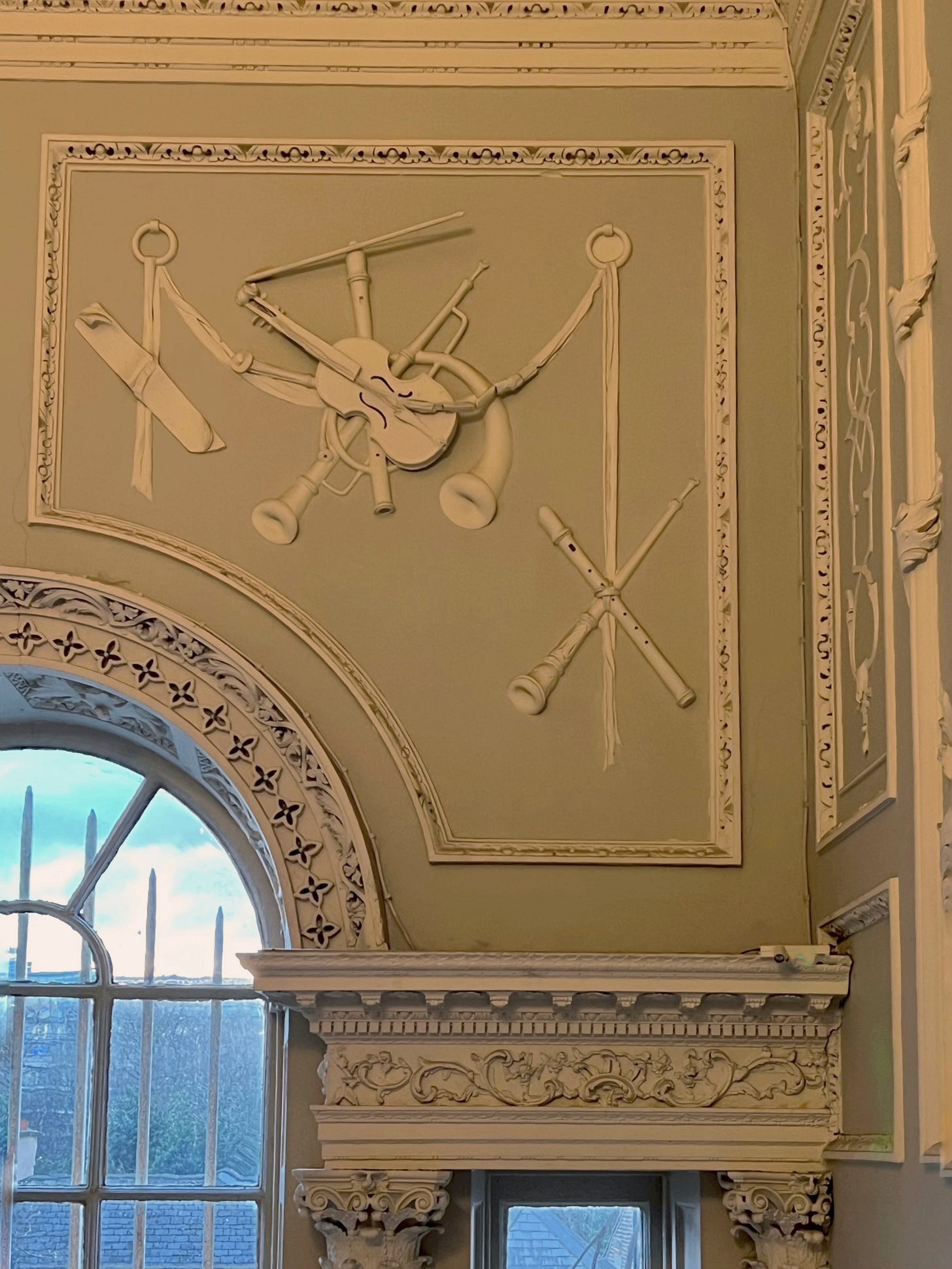
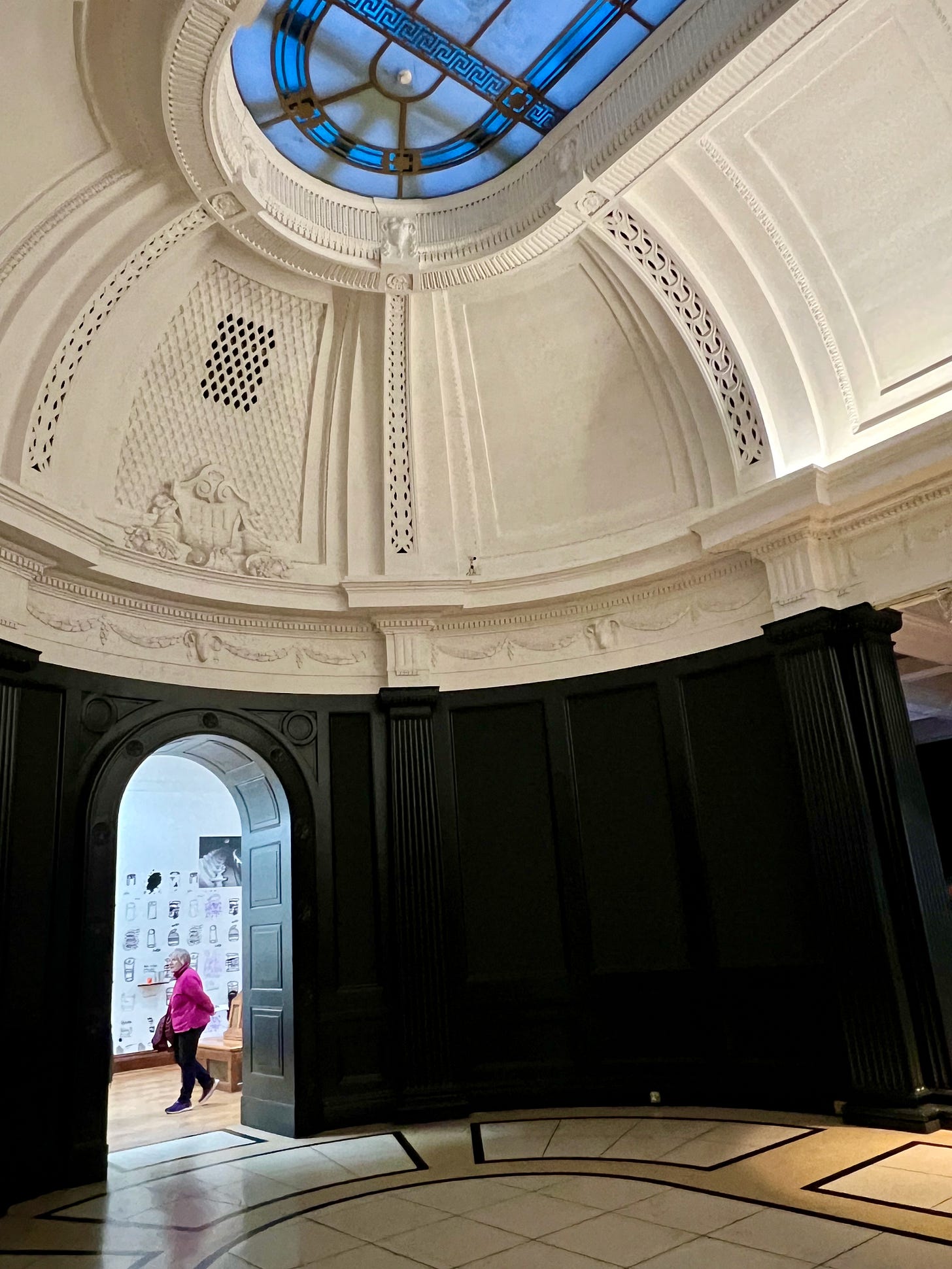
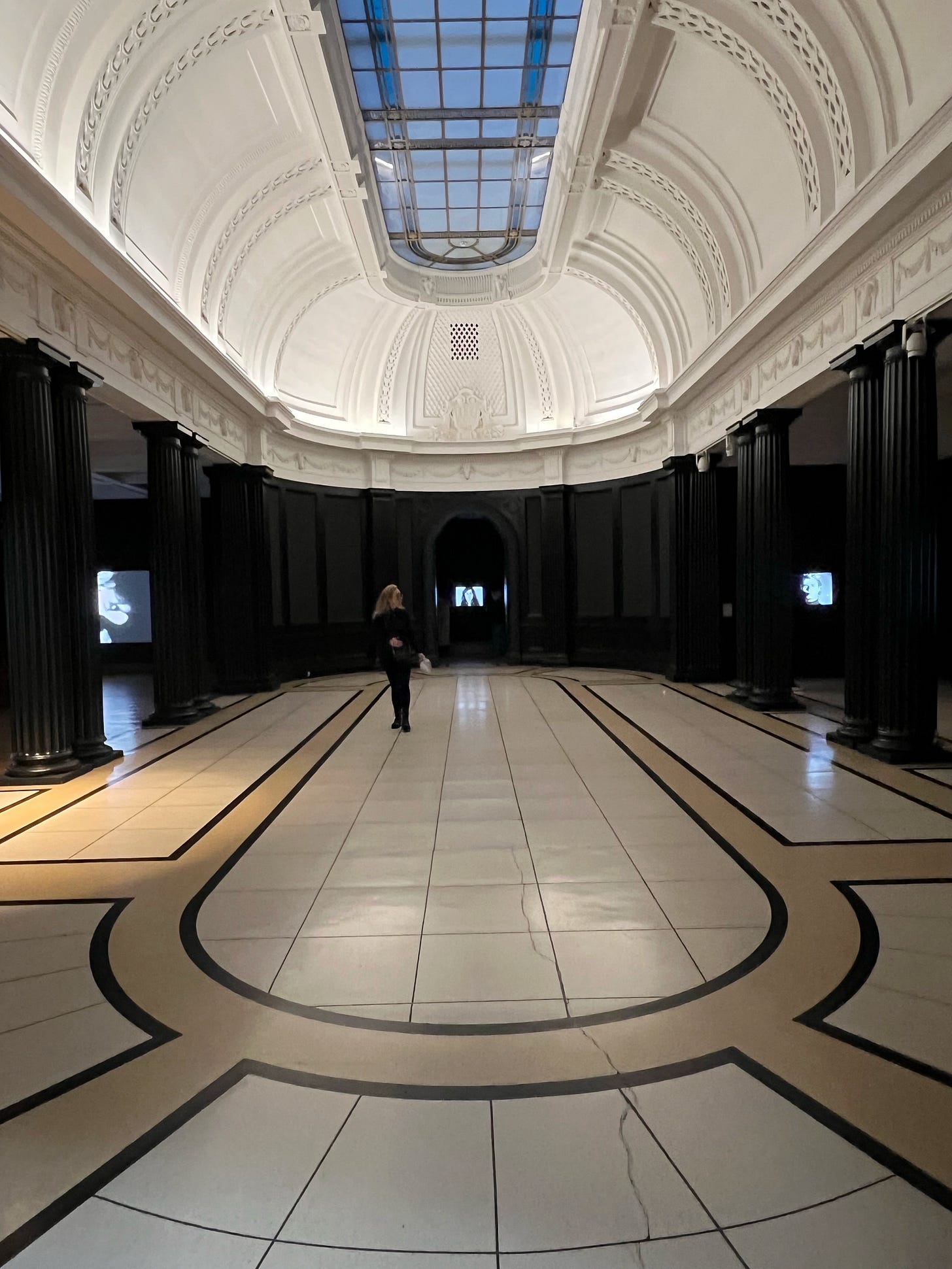


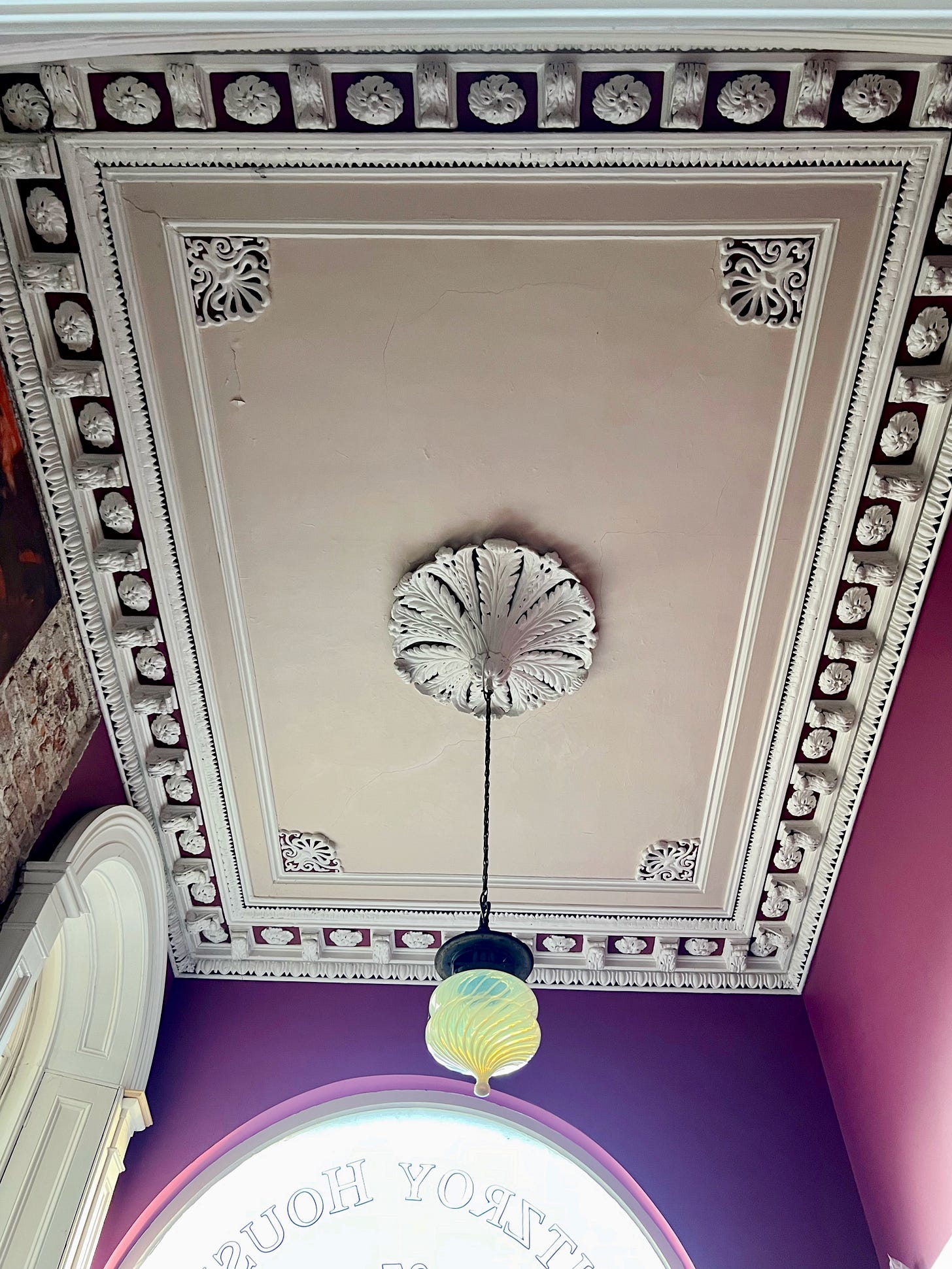
Beautiful! Love Newman House's Rococo plasterwork designs.
Stunning and as always, informative. Thanks!